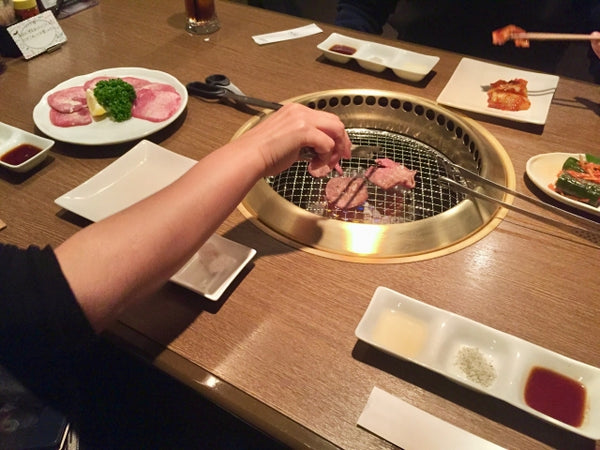Guide to Yakiniku: Japanese BBQ

Yakiniku, also known as Japanese barbecue, is a style of Japanese dining that refers to grilled meat cuisine. In fact, the word "yakiniku" literally translates to "grilled meat"! Though it typically indicates beef, other meats such as pork, chicken, and lamb can also be considered yakiniku.
History of Yakiniku
Yakiniku has its roots in Korean cuisine, with the first yakiniku restaurant opening in Japan in the 1950s. The Korean style of barbecue, known as "gogigui," involved grilling thin slices of beef and other meats over a charcoal fire. The Japanese embraced this new style of cooking and began to develop their own version of Korean-style barbecue, incorporating their own flavors and traditions along the way.

How to Enjoy Yakiniku
When preparing yakiniku, there are a few different types of grilling materials to choose from such as charcoal, gas, and electric. Charcoal grills are the most traditional and infuse the meat with a smoky flavor, whereas gas and electric grills are more convenient and easier to use, making them the go-to options for at-home dining. No matter which you choose, make sure to slice your meat uniformly so that it cooks evenly on the grill!
When eating out at a yakiniku restaurant, you'll be seated at a table with a built-in grill. The server will bring out a variety of meats and veggies raw, which allows you to prepare them according to your preferred doneness. In this way, yakiniku is an interactive dining experience, encouraging you to cook your food exactly how you like it. It's also common for yakiniku restaurants to offer an all-you-can-eat option, where you can consume as much as your heart desires!

There are several different cuts of meat available at a typical yakiniku restaurant. Some of the most sought-after cuts include thinly-sliced beef brisket, short ribs, and skirt steak, but many places will also serve more unique cuts such as beef tongue and horumon -- the Japanese word for "discarded goods" referring to intestines, heart, and liver. Try cooking the thin meats first, then using the accumulated oils to grill thicker cuts. Most yakiniku restaurants also offer a variety of vegetables such as bell peppers, onions, and mushrooms, which you can grill and eat alongside the meat.
Try making your own yakiniku at home with our vegan Yakiniku Sauce.
About the author:

Britney Budiman
Britney Budiman (@booritney) is a writer, minimalist, aspiring effective altruist, and runner-in-progress with a penchant for saying “yes.” Previously, she has worked in Cambodia at a traditional arts NGO, in Brazil as a social sciences researcher, and in San Francisco at a housing start-up. She currently lives in the countryside of Kagoshima, Japan, where she teaches English. Her favorite thing in the world is good conversation.




